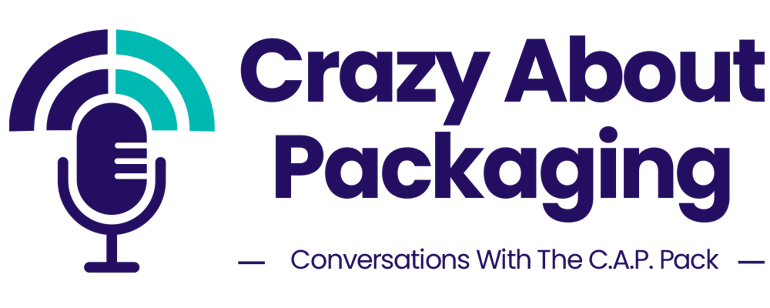
Welcome back to this month’s episode of Crazy About Packaging! Today, we're diving into the world of aseptic packaging — a key player in keeping our food safe and tasty. What's behind the aseptic packaging process, and why should we care? Keep reading for a sneak peek into our latest podcast episode.
Sneak Peek for Episode #14
Tune into our latest episode to unwrap the secrets of the aseptic packaging process. Discover its uses, challenges, and the exciting role of sustainable materials like XPP polypropylene. Catch us on Spotify or Apple, or watch on our website. Curious about the details? Here’s a preview of our discussion.
Can I Recycle That?
This month, Natalie once again challenges us with her favorite game: "Can I Recycle That?".
This time around, Natalie presents us with a common lunchtime snack from our childhoods: a pudding cup. The cup, likely processed on a form-fill-seal line, is made of polystyrene with EVOH to protect the food and keep it shelf-stable. Natalie walks us through the key features of the cup and asks her signature question. Can the cup be recycled?
Mike and Jonathan give the cup a resounding, final, "NO." Want to hear why they’re so against trying to recycle this pudding cup? Watch the podcast to hear their reasoning!
Exploring the Aseptic Packaging Process
So before we dive into the challenges and applications, what is aseptic packaging?
As Jonathan explains, "Aseptic packaging has been around for many years and it's kind of an alternative to some of the other sterilization techniques out there. It's really unique in many facets because actually what you're doing is you're pre-sterilizing the product under UHT conditions. So now you have a sterile product, then you have to sterilize the material either through hydrogen peroxide, steam sterilization, or other protocol."
In short, the aseptic packaging process is all about sterilizing not just the product, but the packaging material as well. This process works very well with form-fill-seal applications, because rollstock can be easily sterilized before forming, and once the sterilized food is placed into the sterile container, it is sealed to create a shelf-stable environment.
What are the Applications of Aseptic Packaging?
The aseptic packaging process is particularly helpful for shelf-stable food items, including dairy products, juices, soups, and sauces. It is ideal for products like liquid dairy items, plant-based milks, and ready-to-drink beverages. The technology extends the shelf life of these products while ensuring they remain safe and free of contaminants. And over the years, aseptic packaging has evolved to include more than just liquid products. Today, it encompasses a range of semi-solid foods, like puddings and yogurts, offering a convenient and safe packaging solution that meets both consumer demands and shelf-life requirements.
Mike tells us a funny story about how fascinating the process can be — in moderation. "It is a fun process to watch, but it depends on how long you watch it," he explains. "My first exposure to the aseptic packaging process was observing four lines in this factory on an account Jonathan managed. We had to observe continuously to make sure our material was being processed properly, and I spent 5 days watching little coffee creamers be made — I probably saw 3 or 4,000,000 cups made in that 5-day period!"
Challenges in Aseptic Packaging
One of the primary challenges in the aseptic packaging process is selecting the right material. It’s crucial to use a material that can be easily sterilized and work well with form-fill-seal lines without creating downtime and maintenance problems.
As Mike explains, "These companies can’t afford to have excessive downtime; they can’t afford additional maintenance and still be profitable. For that reason, styrene became a really good material in this format. However, as we keep preaching, the world has changed. Styrene is not recyclable, and we want to recycle all of our plastics. So our XPP product is something that I think is tailor-made for FFS in aseptic formats."
What’s Next for Aseptic?
The future of aseptic packaging is shaping up to be an exciting journey marked by innovation and a drive towards sustainability. A key focus is on developing materials that can withstand the rigorous sterilization process of aseptic packaging while being environmentally friendly. Materials like XPP polypropylene are emerging as frontrunners in this regard.
As the industry moves forward, there's a growing emphasis on not just maintaining the integrity and safety of food products but also on ensuring the packaging materials align with the global push towards sustainability. This shift is particularly challenging given the high stakes involved in aseptic packaging, where any compromise in material quality can lead to significant downtime, maintenance issues, and potential food safety risks.
Let’s Talk About the Aseptic Packaging Process
Interested in the intricacies of aseptic packaging? Join us in exploring this vital aspect of the food packaging industry. Share your thoughts with us on LinkedIn, Facebook, and Instagram and don't forget to listen and subscribe to our podcast on Spotify, Apple, Google, or our website.



